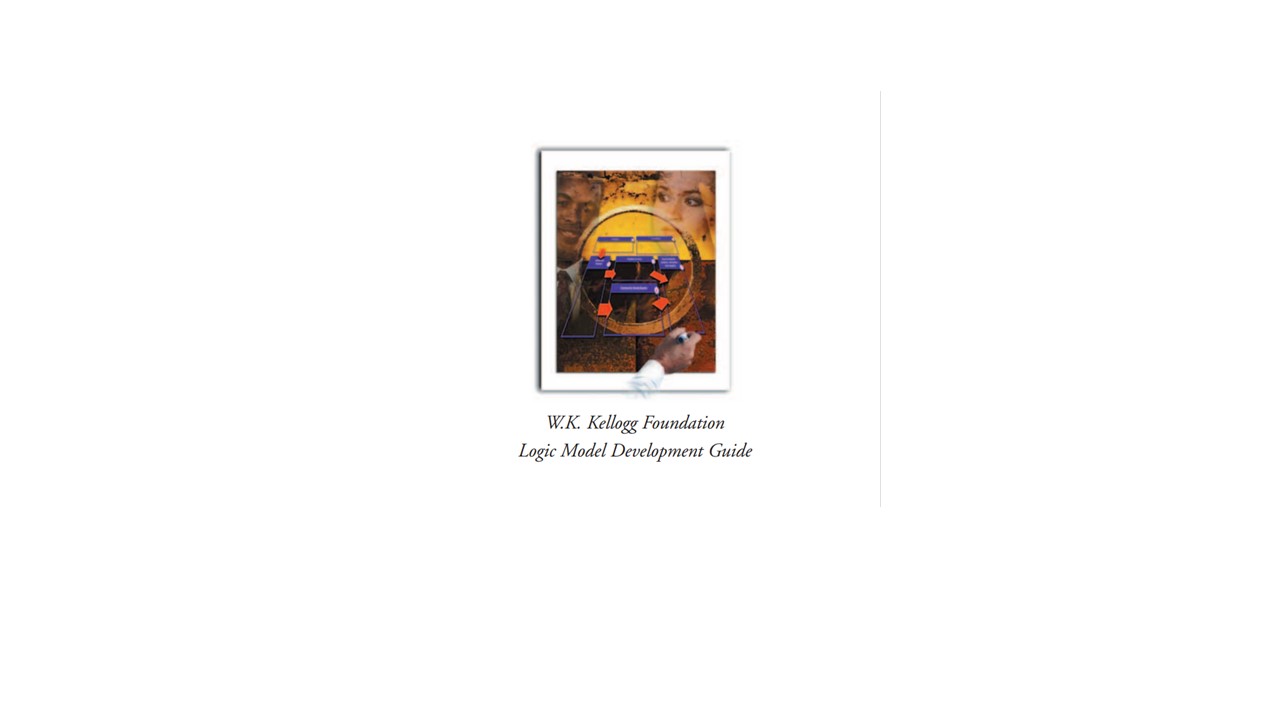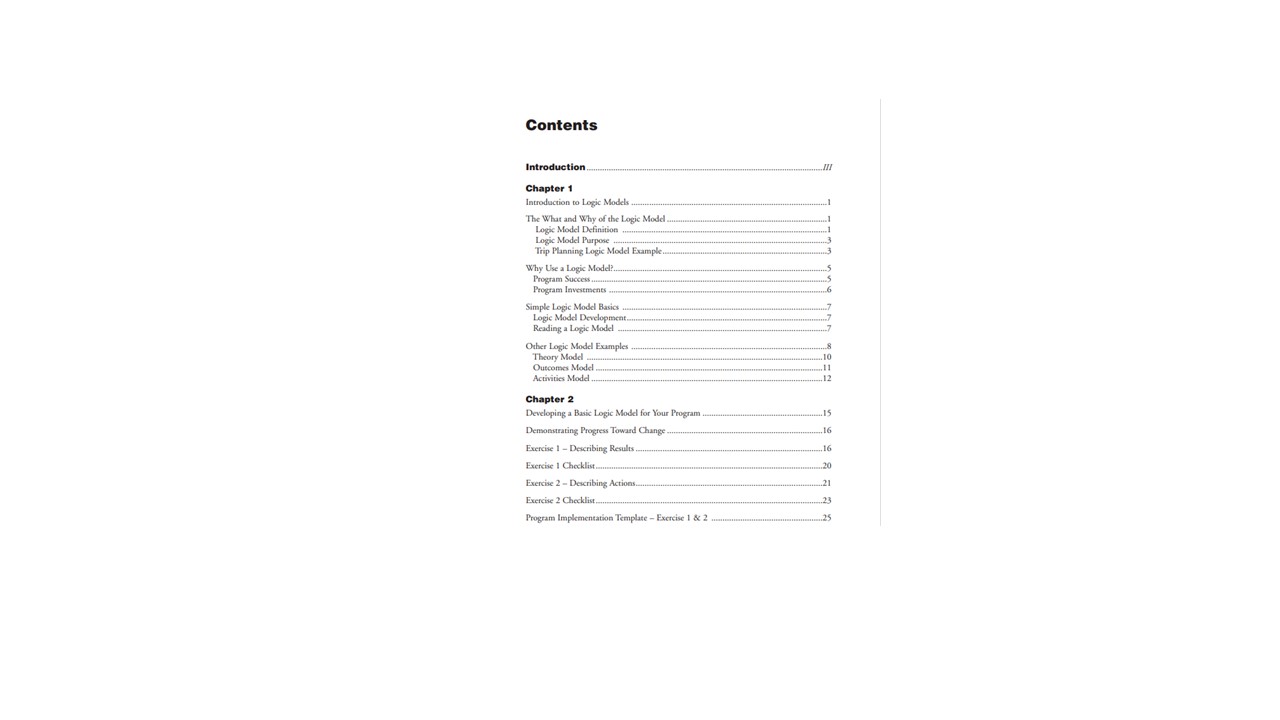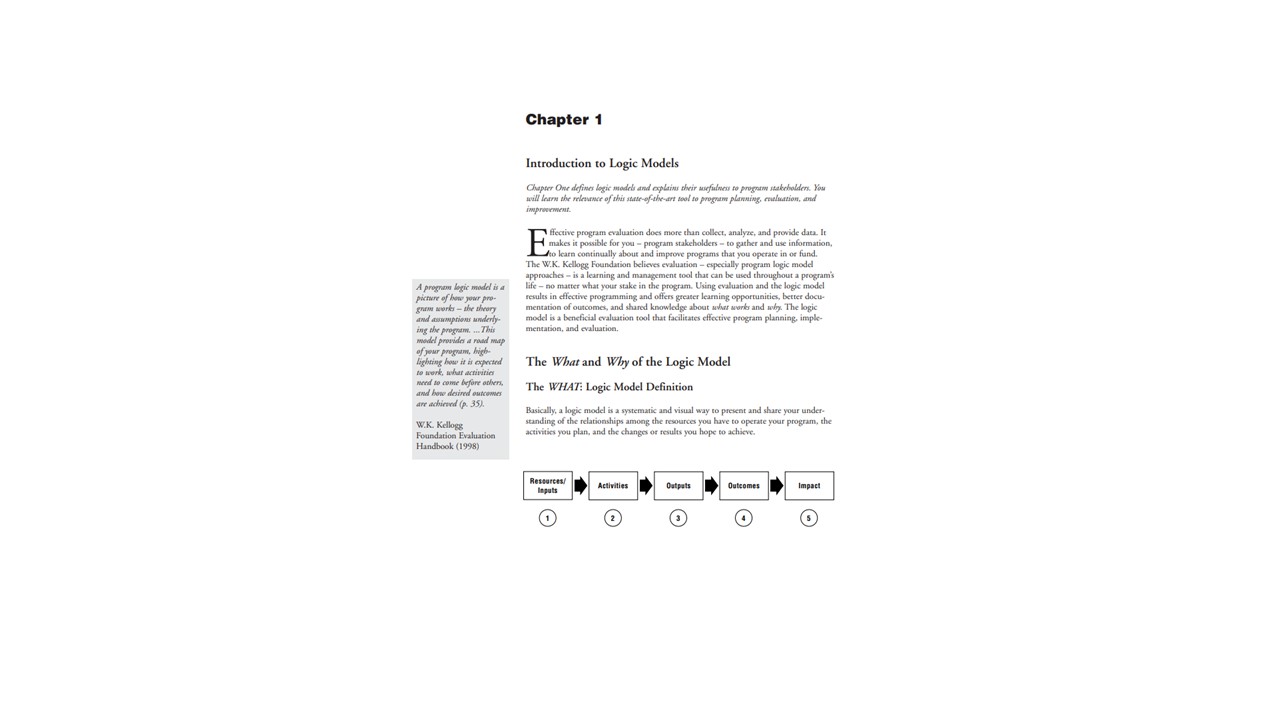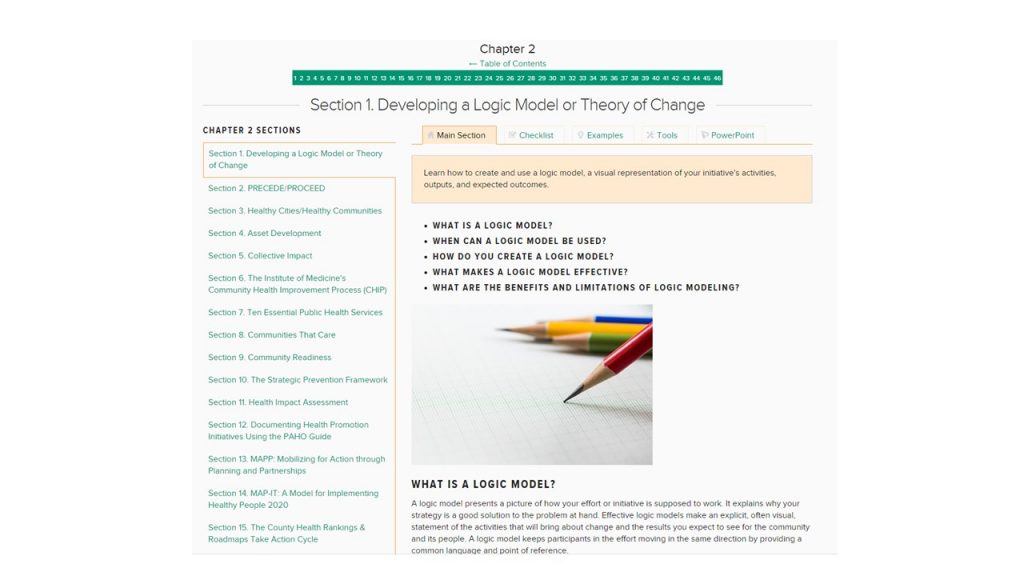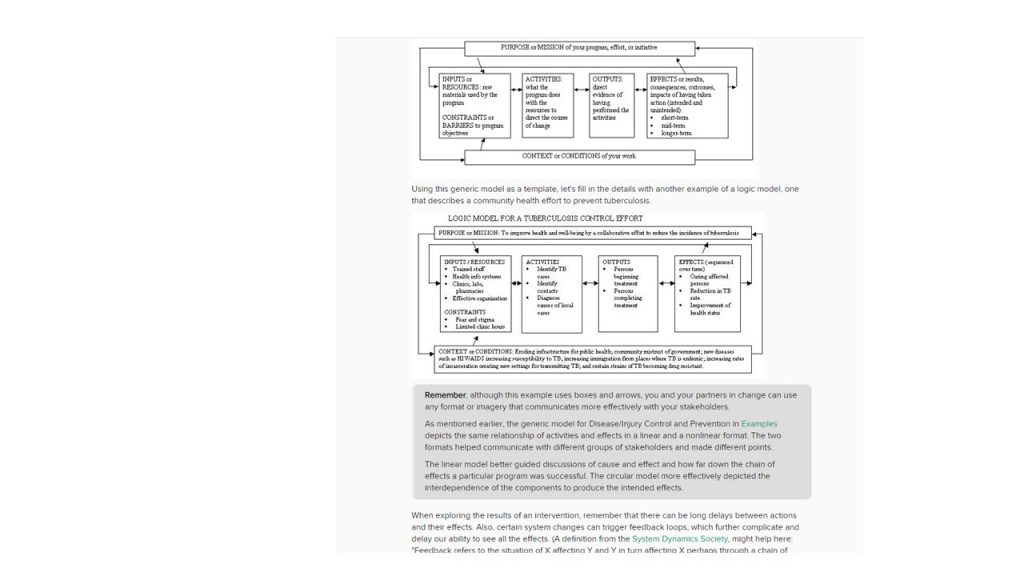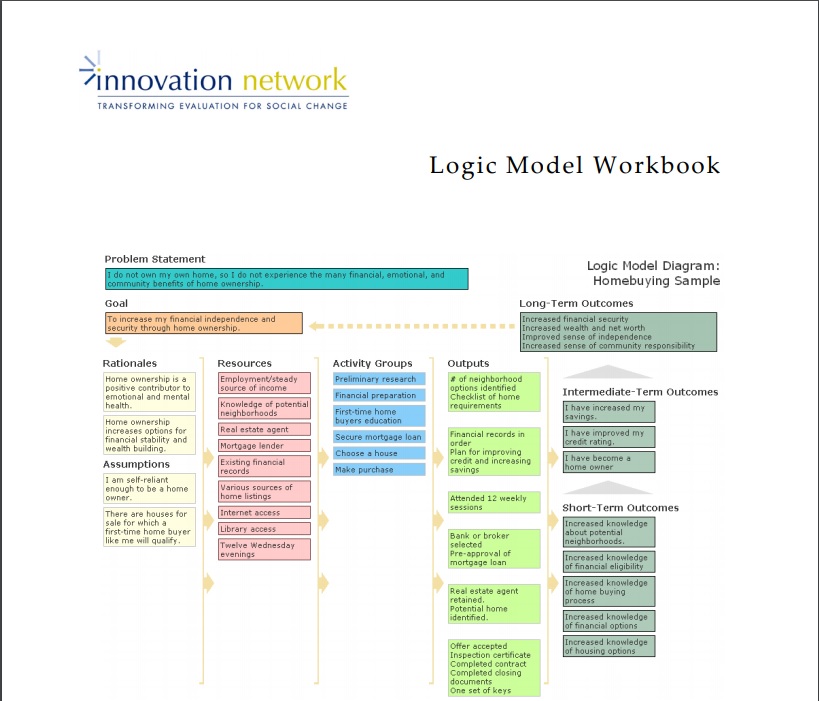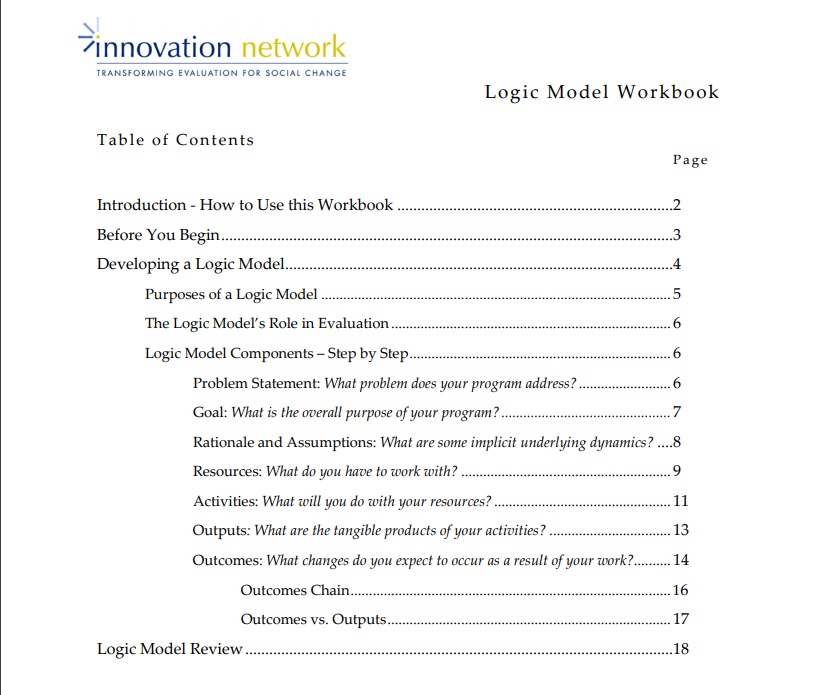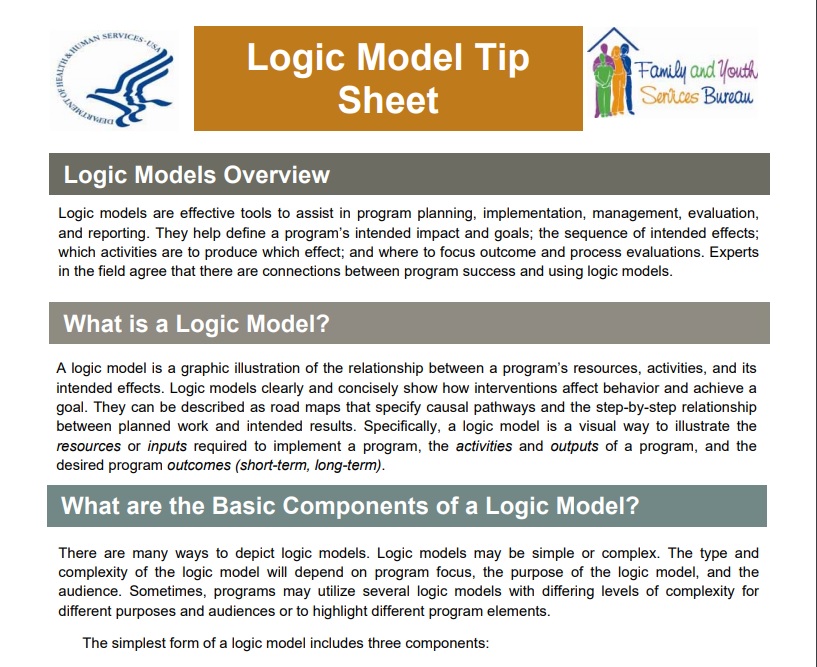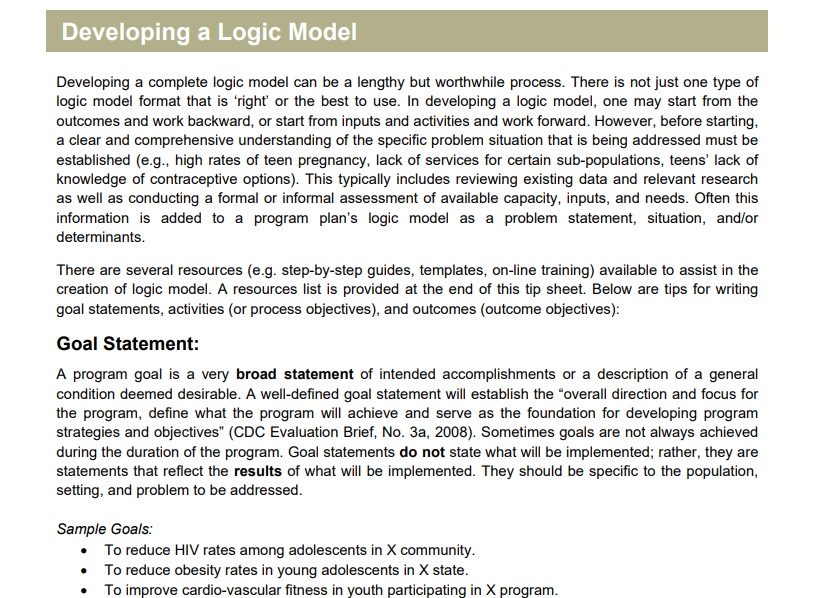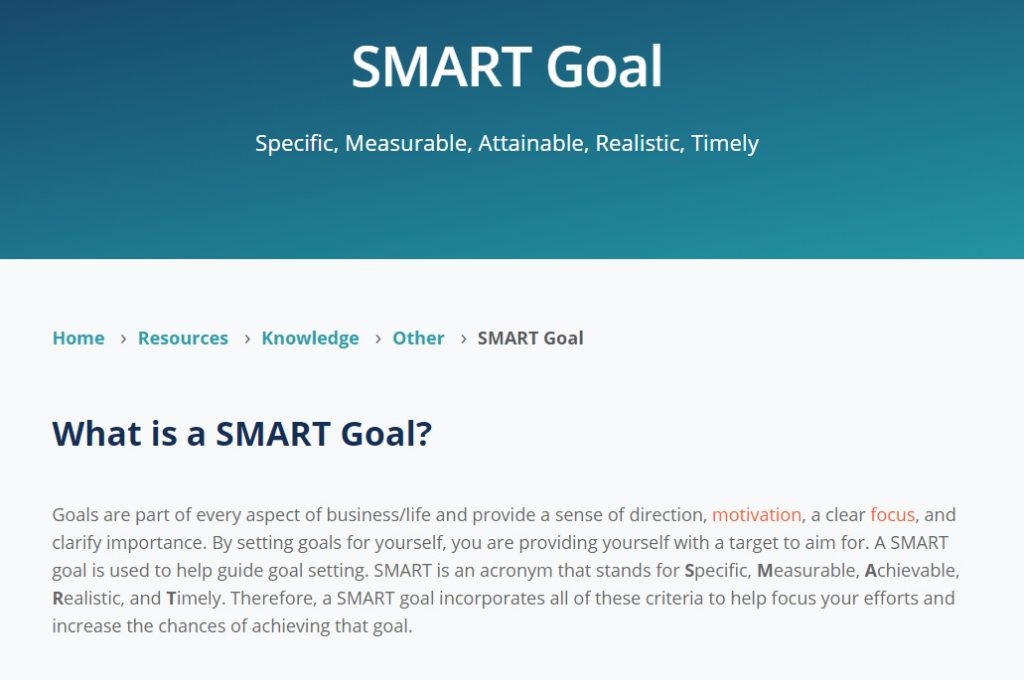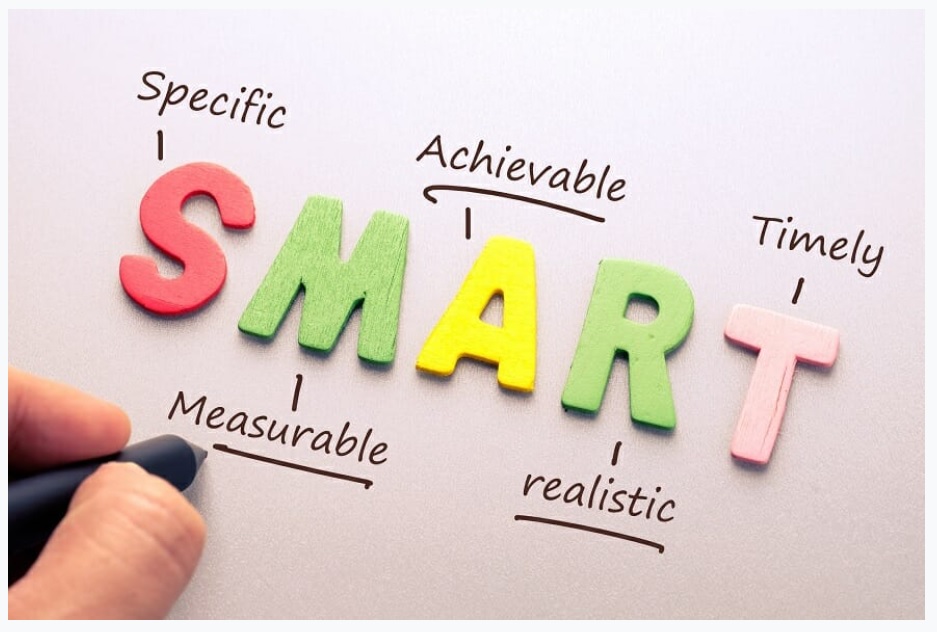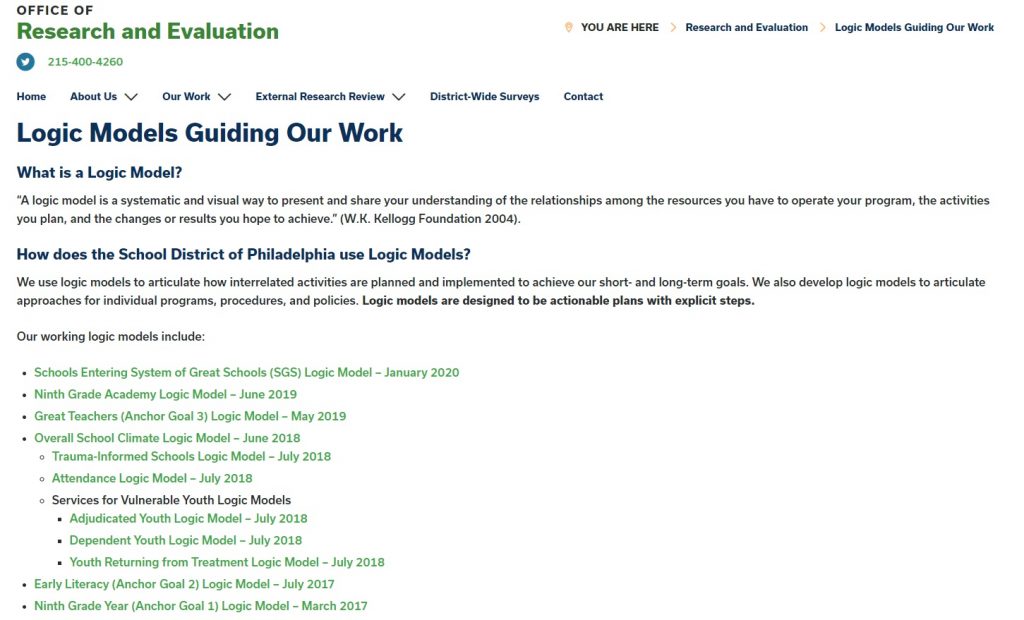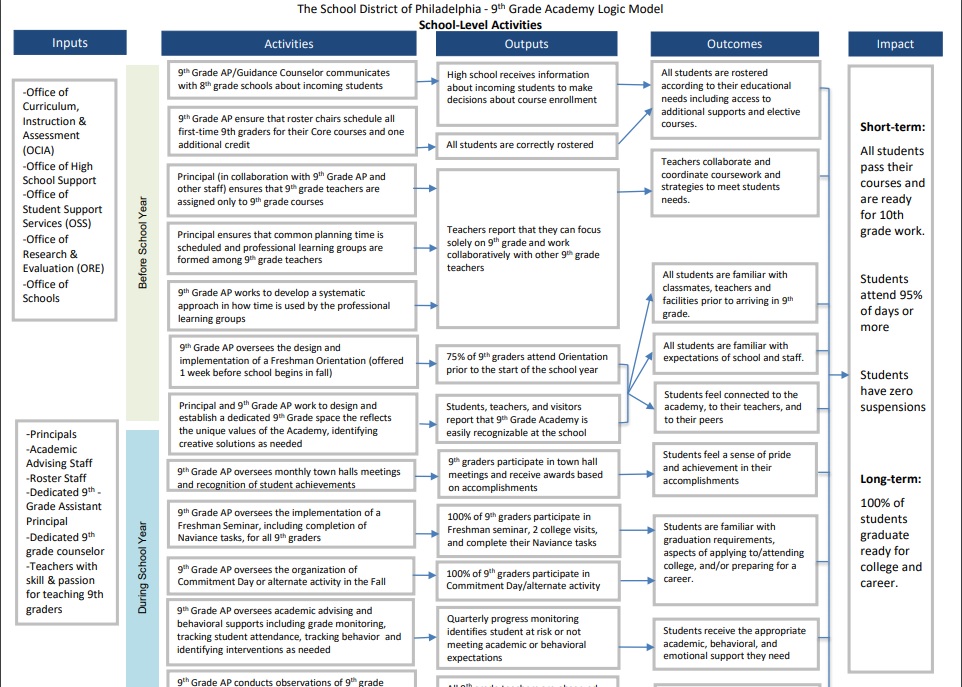Listed below are resources that may be useful to you as you either develop or revise your program’s logic model.
Recommended Logic Model Resources
Comprehensive Guides to Understanding and Developing Logic Models
The W.K. Kellogg Foundation’s Logic Model Development Guide
This guide, which is the primary source of literature on logic models, is like an encyclopedia. This guide was developed to provide comprehensive practical assistance to nonprofits engaged in the process of initiating and completing outcome-oriented evaluation of projects. It aims to provide sufficient orientation to the underlying principles of “logic modeling” and serve as a tool for every step of the process.
The Community Tool Box: Developing a Logic Model or Theory of Change
This resource is a thorough and user-friendly guide that aims to address the following questions:
- What is a logic model?
- When can a logic model be used?
- How do you create a logic model?
- What makes a logic model effective?
- What are the benefits and limitations of logic modeling?
This resource is a great tool that is filled with illustrations, helpful examples, links to more resources, and step-by-step guidance. The tool-box is a bit more accessible and less intense than Kellogg’s Guide.
Innovation Network: Logic Model Workbook
This Logic Model Workbook is an extremely thorough resource that navigates the reader in a very comprehensible way. There is a table of contents for your convenience, that begins with guidance on “how to use this workbook”, gives tips on “before you begin”, and then guides you through the development of a logic model.
The table of contents is very helpful for those looking to jump to a particular section to receive guidance on a specific stage of the process. The guide concludes with appendices that include templates and worksheets. This resource is useful to gain a complete understanding of every element of the building process and is a longer-read.
Supporting Resources to Help in the Development of Logic Models
The Community Tool Box: Understanding Risks and Protective Factors
The Community Toolbox contains an incredible array of guidance on developing and implementing programs, including very useful guidance around understanding and mapping risks and protective factors. Developing lists of risks and protective factors can be a powerful way to better understand the community you are serving and the context and rationale for your program.
US Department of Health and Human Services, Family and Youth Services Bureau, Logic Model Tip Sheet
This resource is a quick read with direct guidance about what a logic model is used for, what the basic components are, how one is developed, and what the outcomes should be. It also provides a great list of resources in the references section (many of which we have provided on this page). It might be useful to read this resource to provide a high-level overview before diving into more sophisticated resources.
Corporate Finance Institute, SMART goals
Setting “SMART” (Specific, Measurable, Attainable, Realistic, Timely) goals is an important aspect of developing a strong logic model. The process of developing SMART Goals will help during all phases of logic model development – from framing your high-level program goals in the beginning to developing the long-term outcomes you are expecting to result from your program.
Examples of Logic Models
School District of Philadelphia, Office of Research and Evaluation, Logic Models Guiding Our Work
The District’s Office of Research and Evaluation has posted logic models that have been developed by District offices and which are guiding the work of those offices. These could be a useful reference if your program’s work overlaps with an office that has produced a logic model.
